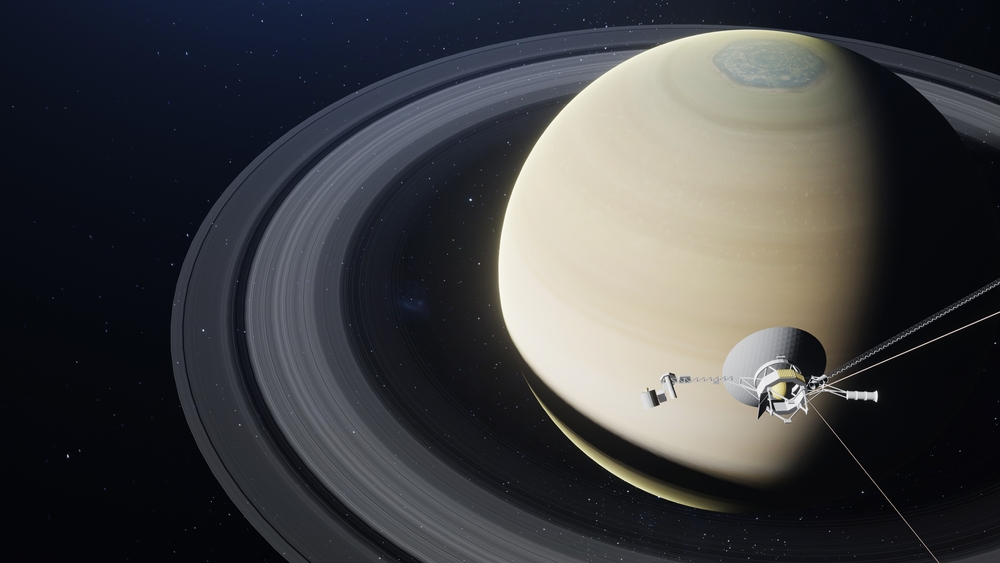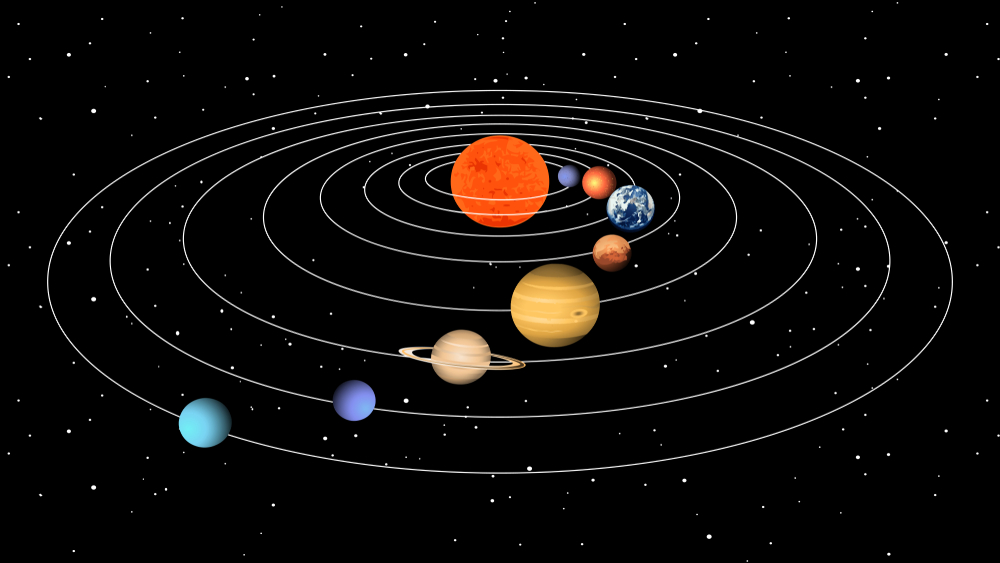“Something Extraordinary Occurred”: A New 380-Kilometer World Has Been Found In Our Solar System

Deep in the frozen wilderness beyond Pluto, astronomers have discovered something that shouldn’t exist according to current theories. A massive world, nicknamed Ammonite, has been hiding in plain sight for billions of years. Its discovery doesn’t just add another dot to our solar system map. It shatters a leading theory about a mysterious ninth planet and reveals evidence of ancient chaos that shaped our cosmic home.
What makes Ammonite so special? Why are planetary scientists calling it a “cosmic fossil”? And what does its bizarre orbit tell us about events that happened when Earth was still a molten rock? Buckle up for a journey to the edge of everything we know.
Meet Our Solar System’s Newest Member

Ammonite officially carries the designation 2023 KQ14, but its nickname comes from its fossil-like ability to preserve ancient history. Scientists estimate this world measures between 220 and 380 kilometers across. To put that in perspective, you could fit 45 Mount Everests side by side across its diameter.
When astronomers first spotted Ammonite, it was cruising 71 times farther from the Sun than Earth sits. That distance makes Neptune look like a close neighbor. Yet Ammonite’s elliptical orbit carries it even farther out, reaching distances of 432 astronomical units from our star. One complete orbit takes roughly 4,000 Earth years.
Ammonite belongs to an exclusive club called sednoids, named after Sedna, the first of these strange objects discovered in 2003. Only four sednoids have ever been found: Sedna, 2012 VP113, Leleākūhonua, and now Ammonite. Each one follows a highly eccentric orbit that takes it far beyond where any known planet’s gravity holds sway.
But here’s where things get interesting. While the other three sednoids march in formation with similar orbital patterns, Ammonite dances to its own beat, following a path that points in completely the opposite direction.
A World That Breaks All the Rules

Sednoids live in a realm where our solar system’s usual rules don’t apply. Regular asteroids and comets stay relatively close to the Sun, where planetary gravity keeps them in check. Sednoids venture into the cosmic wilderness where Neptune’s influence barely whispers across the void.
Dr. Fumi Yoshida, who leads the team that found Ammonite, put it perfectly: “Something extraordinary occurred during the ancient era when Ammonite formed.” That extraordinary event left its fingerprints on Ammonite’s orbit, creating a cosmic record that has remained unchanged for 4.5 billion years.
Ammonite’s orbit carries it as close as 66 astronomical units from the Sun at its nearest approach, called perihelion. At its farthest point, called aphelion, it swings out to roughly 432 astronomical units. For comparison, Pluto never gets farther than 49 astronomical units from the Sun.
Computer simulations reveal that Ammonite has maintained this stable orbit since the solar system’s youth. While planets migrated and asteroids got scattered, Ammonite preserved its ancient trajectory like a message in a cosmic bottle.
How Hunters Found a Needle in Space’s Haystack
Finding objects like Ammonite requires patience, powerful telescopes, and a bit of luck. Astronomers working on the Formation of the Outer Solar System: An Icy Legacy project, known as FOSSIL, used the Subaru Telescope on Hawaii’s Mauna Kea to scan the sky systematically.
During observations in March, May, and August 2023, they spotted a faint dot moving slowly against the background stars. Follow-up observations with the Canada-France-Hawaii Telescope in July 2024 confirmed their suspicions. They had found something remarkable.
But confirming Ammonite’s orbit required detective work spanning decades. Researchers combed through archive images from multiple observatories, finding earlier glimpses of their quarry in photos from 2021, 2014, and even 2005. Each old image helped refine their calculations, creating a 19-year observation arc that pinned down Ammonite’s orbital path with precision.
Finding such objects demands cutting-edge technology. At the distances where sednoids live, they appear incredibly faint. Ammonite’s apparent magnitude of 24.6 makes it roughly 16 million times dimmer than the faintest stars visible to the naked eye.
Why Ammonite Stands Apart From Its Siblings
Before Ammonite’s discovery, the three known sednoids shared a suspicious pattern. Their orbits clustered together in a way that suggested something had herded them into similar paths. Astronomers proposed that an undiscovered ninth planet might be gravitationally shepherding these distant worlds.
Ammonite breaks this pattern completely. Its orbit points in the opposite direction from its siblings, disrupting what seemed like cosmic choreography. Rather than supporting the Planet Nine hypothesis, Ammonite’s discovery challenges it.
Ammonite also fills a mysterious gap that had puzzled scientists. Previous surveys found objects with moderate distances from the Sun and objects at extreme distances, but few in between. Astronomers called this the “perihelion gap.” Ammonite sits right in this gap, proving that objects do exist in this previously empty region of space.
Orbital simulations confirm that Ammonite has remained stable for at least 4.5 billion years. Unlike objects closer to the Sun that experience constant gravitational tugs from planets, Ammonite drifts in a region where such influences barely register.
Bad News for Planet Nine Believers
For years, astronomers have debated whether a massive ninth planet lurks in the outer solar system. Proponents argue that such a planet could explain the clustered orbits of distant objects through its gravitational influence.
Dr. Yukun Huang, who conducted orbital simulations of Ammonite, delivered sobering news for Planet Nine supporters: “It is possible that a planet once existed in the solar system but was later ejected, causing the unusual orbits we see today.”
Computer models show that if Planet Nine existed as currently theorized, Ammonite’s orbit would be unstable. The hypothetical planet would either capture Ammonite into its gravitational dance or fling it out of the solar system entirely. Yet Ammonite has maintained its current path for billions of years.
Scientists tested various Planet Nine scenarios, adjusting the hypothetical planet’s mass, distance, and orbital characteristics. In most simulations, Ammonite gets ejected within a billion years. Only scenarios placing Planet Nine much farther out than previously thought allow Ammonite to survive.
Ammonite’s discovery doesn’t completely rule out Planet Nine, but it forces astronomers to reconsider where such a planet might hide and how it might influence distant objects.
A Time Machine to 4.2 Billion Years Ago

Scientists can run orbital calculations backward through time, essentially rewinding the solar system’s clock. When they did this for all four sednoids, they discovered something remarkable.
Around 4.2 billion years ago, roughly 300 million years after the solar system formed, all four sednoids shared similar orbital orientations. They formed a tight cluster that has since dispersed due to the gradual gravitational influences of the giant planets.
Statistical analysis reveals that this ancient clustering has over 97% confidence of being real rather than coincidental. Something dramatic happened during the solar system’s youth that scattered objects into the orbits we see today.
Possible culprits include a passing star that swooped close to our solar system, a rogue planet that formed here but got ejected, or interactions with neighboring stars when the Sun was still part of its birth cluster. Each scenario leaves different fingerprints on the resulting orbits.
Dr. Shiang-Yu Wang, the study’s lead author, captured the significance perfectly: “Ammonite’s orbit tells us that something sculpted the outer solar system very early on. Whether it was a passing star or a hidden planet, this discovery brings us closer to the truth.”
What Ancient Chaos Teaches Us Today
Ammonite serves as a fossil from the solar system’s violent youth. Its orbit preserves evidence of processes that shaped our cosmic neighborhood when planets were still forming and migrating to their current positions.
Understanding these ancient events helps scientists model how planetary systems evolve. Most exoplanetary systems discovered around other stars show signs of past upheaval, with planets in unexpected orbits that suggest violent histories.
Ammonite’s story connects to broader questions about planetary formation. How common are the processes that created our solar system? Do other stars harbor similar populations of distant, fossil-like objects? What role do external influences play in shaping planetary systems?
Each new discovery in the outer solar system reveals another piece of this cosmic puzzle. Ammonite shows that our solar system experienced more dramatic events during its formation than previously imagined.
The Hunt Continues for More Solar System Secrets

Currently, only a handful of telescopes worldwide possess the sensitivity needed to detect objects like Ammonite. Subaru Telescope stands among the few facilities capable of pushing into these dim, distant realms.
Future surveys promise to expand our census of distant objects dramatically. Larger telescopes and more sensitive detectors will reveal fainter objects and extend our reach even farther into the outer solar system.
Finding more sednoids will help scientists distinguish between competing theories for their origin. Do their orbits support the passing star hypothesis? Do they reveal evidence of an ejected planet? Or do they point toward some other explanation entirely?
Each additional discovery refines our understanding of the solar system’s architecture and history. What seems like an empty void beyond Neptune actually harbors a complex population of objects that remember the solar system’s youth.
Our Solar System Has More Stories to Tell
Ammonite’s discovery proves that the outer solar system holds secrets we’re only beginning to uncover. One object can overturn decades of theoretical work and force scientists to reconsider fundamental questions about planetary formation.
Science advances through unexpected discoveries that challenge our assumptions. Ammonite represents exactly this kind of breakthrough, revealing complexity where we expected simplicity and raising new questions about our cosmic home’s past.
More mysteries await in the vast, unexplored regions beyond Neptune. Each new world discovered adds another chapter to the epic story of how our solar system formed and evolved. Ammonite reminds us that even after centuries of astronomical discovery, the cosmos still holds surprises that can reshape our understanding of everything we thought we knew.
Loading...

